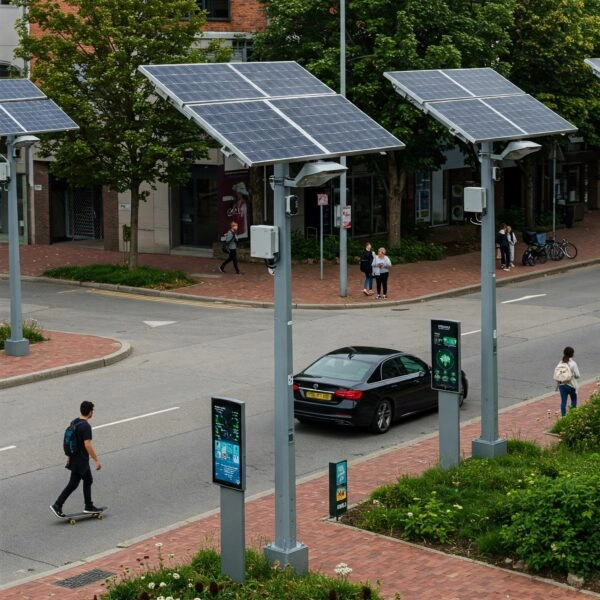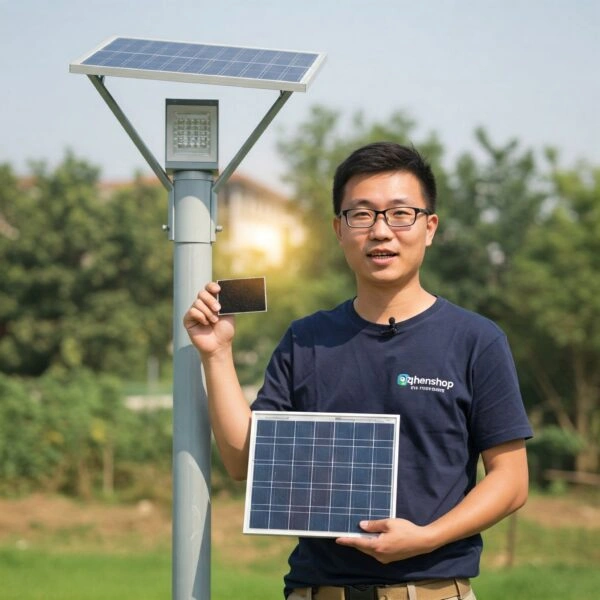
Understanding the Need for Solar Street Lighting in Africa
Africa faces a critical challenge regarding outdoor lighting, with inadequate street illumination affecting various aspects of daily life. Many urban and rural areas lack sufficient light at night, leading to heightened safety concerns, increased crime rates, and diminished community engagement. In cities, insufficient lighting can make neighborhoods feel unsafe, discouraging residents from using public spaces after dark. This is particularly true in informal settlements where infrastructure is lacking, leaving community members vulnerable to criminal activities.
Moreover, the rapid population growth in African countries exacerbates the existing challenges associated with public safety and energy supply. As cities expand, the demand for reliable street lighting is at an all-time high. This requirement is not limited to urban regions; rural areas also seek better lighting solutions to enhance their safety and improve the quality of life. Unfortunately, many local municipalities struggle to provide energy-efficient solutions due to reliance on traditional electricity grids, which are often unreliable and insufficient to meet increasing demands.
Integrated solar street lights offer a sustainable energy alternative to the conventional grid system. By utilizing solar panels, these lights can operate independently, which mitigates the issues arising from power outages while ensuring consistent functionality. Furthermore, the use of solar energy serves as a cost-effective solution in the long run, especially in areas with abundant sunlight. With features such as automatic control and lightweight design, solar lights can be deployed rapidly and efficiently across vast areas. Additionally, options exist for custom-made solar lights, tailored to specific needs and conditions. Adopting these efficient and reliable solar lighting solutions not only addresses safety concerns but also fosters community engagement, paving the way for safer, more connected neighborhoods throughout Africa.
Components of Customized Solar Street Lighting Solutions
Customized solar street lighting solutions consist of several essential components that work collaboratively to provide reliable and efficient illumination. The primary elements include solar panels, batteries, LED lights, and integrated controllers. Each component plays a vital role in ensuring the overall effectiveness of the lighting solution.
Solar panels are critical, as they convert sunlight into electrical energy during the day. This energy is stored in batteries for use during the night. The solar panel’s efficiency directly impacts the system’s performance, thereby emphasizing the importance of selecting high-quality, durable solar panels tailored to the specific geographic and climatic conditions of different regions in Africa.
Batteries serve as the energy reservoir, storing the electricity generated by the solar panels. The choice of batteries must account for factors such as capacity, longevity, and temperature tolerance. Reliable solar lights require batteries that can withstand varying climate conditions while delivering consistent power throughout the night. Moreover, lightweight and small-sized solar batteries can ease installation and maintenance efforts.
The LED lights themselves are another crucial component of any solar street lighting system. They offer efficient illumination while conserving energy, making them a preferred option compared to traditional lighting sources. Custom made solar lights can feature different lumen outputs based on the area’s specific needs, ensuring optimal lighting efficiency. High-quality LED lights also contribute to the longevity of the system, reducing the frequency of replacements.
Integrated controllers manage the operation of solar lighting systems. They can enable automatic control solar lights to turn on and off at specific times or adjust brightness levels based on real-time conditions, providing flexibility and enhancing energy efficiency. Additionally, these controllers are crucial for ensuring that the system operates effectively, minimizing unnecessary energy usage while maintaining reliable performance.
Customizing these components based on local infrastructural factors is essential for enhancing the adaptability and effectiveness of solar street lights across diverse African regions. As such, understanding the interplay between these components allows for the creation of tailored solutions that meet the unique lighting needs of each area.
Benefits of Technology Integration in Solar Street Lights
The integration of advanced technologies into solar street lights is pivotal for enhancing their effectiveness and sustainability. Smart sensors, IoT connectivity, and automation represent the forefront of innovation, allowing for significant improvements in energy efficiency and operational reliability. For instance, the incorporation of light sensors enables solar lights to automatically adjust brightness based on ambient light conditions, thereby optimizing energy usage. This feature makes solar lights not only efficient but also responsive to environmental changes, ensuring that illumination is available when needed while conserving energy at other times.
Moreover, the connectivity enabled by IoT allows for remote monitoring and management of solar street lights. This capability is especially beneficial in large-scale implementations where manual checking of each unit would be impractical. Remote monitoring systems provide real-time data on the performance and operational status of the lights, including battery levels and functionality. Such data can be invaluable for municipalities, facilitating timely maintenance and reducing downtime, which ultimately transforms solar lights into reliable solar lights that contribute to safer urban environments.
In addition to enhancing operational efficiency, technology integration fosters increased user engagement. Advanced interfaces allow local authorities and communities to interact with the solar street lights, optimizing their use and adapting them to meet specific community needs. For example, some installations in urban areas of Africa have successfully adopted customizable settings for emergency situations, thereby promoting public safety. Furthermore, case studies demonstrate that the deployment of efficient solar lights equipped with modern technology leads to reduced costs over time and improved user satisfaction, positioning these solar energy solutions as viable alternative energy-efficient alternatives to regular streetlights.
From smart sensors to automatic control systems, the technological advancements in solar street lighting offer numerous benefits that significantly enhance their sustainability and practicality. Through continuous innovation and integration of such technologies, the promise of durable solar lights can be fully realized, providing communities with small, efficient, and reliable lighting solutions.
Case Studies: Successful Implementations of Solar Street Lighting in Africa
Across Africa, numerous successful implementations of solar street lighting projects highlight the transformative potential of this sustainable energy solution. Valuable lessons can be drawn from these case studies, reflecting the objectives of the projects, the custom solutions developed, and the significant community involvement necessary for success.
One notable example is the large-scale solar street lighting project in Nairobi, Kenya. This initiative aimed to enhance public safety in underserved neighborhoods by installing reliable solar lights throughout the city. The project involved local businesses in the installation process, ensuring the use of durable solar lights that could withstand the region’s climate. Additionally, the integration of lightweight solar panels allowed for easier installation in varying terrains. As a direct outcome, crime rates in the area significantly decreased, and community members reported feeling safer during nighttime hours.
In South Africa, another impressive project took place in rural areas of Limpopo Province. The initiative focused on providing small-sized solar lights to enhance visibility and safety in residential areas. Custom-made solar lights were developed to meet the unique requirements of these communities, incorporating automatic control features that ensured the lights operated efficiently during the night. This energy-efficient alternative to conventional streetlights not only illuminated pathways but also fostered a sense of community ownership. Villagers participated in monitoring and maintaining the lights, promoting sustainable practices and enhancing public engagement.
Furthermore, in Ghana, the municipality launched a project that combined solar energy with mobile applications to allow residents to report malfunctions or maintenance needs. This interactive approach cultivated a sense of responsibility among users while ensuring the longevity of the installed solar lights. Overall, these case studies exemplify how tailored solutions and community involvement create a positive impact on public safety and quality of life in various African contexts. By analyzing these successful implementations, future projects can draw inspiration and insights to create effective solar street lighting solutions that foster development and sustainability.



